Wheat Rye Sourdough
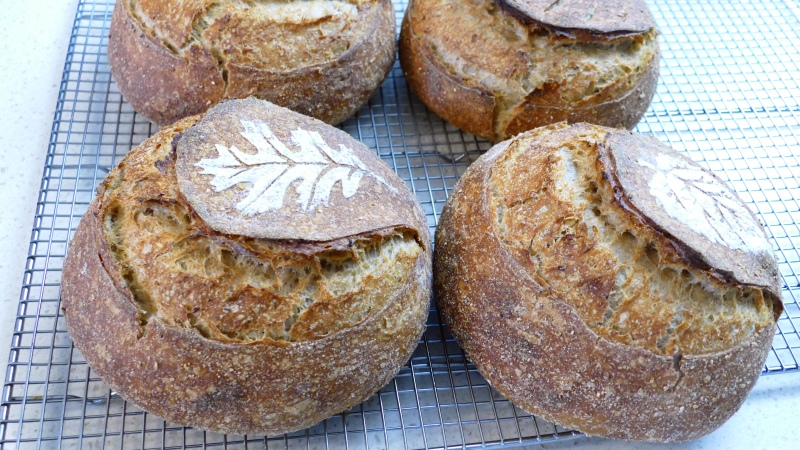

Prepare the cracked grains a few hours before mixing your dough so the grains can cool.
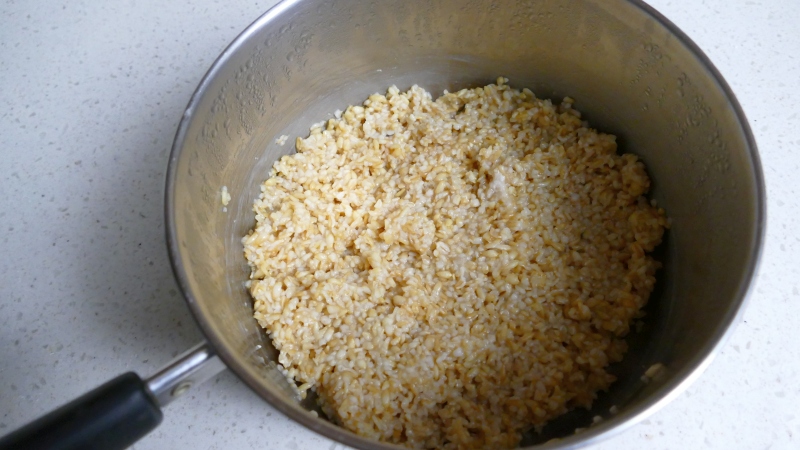
Using 100 grams of cracked grain, pour 200 grams of boiling water over the grains and cover the grains/water. Allow mixture to cool and absorb the water.
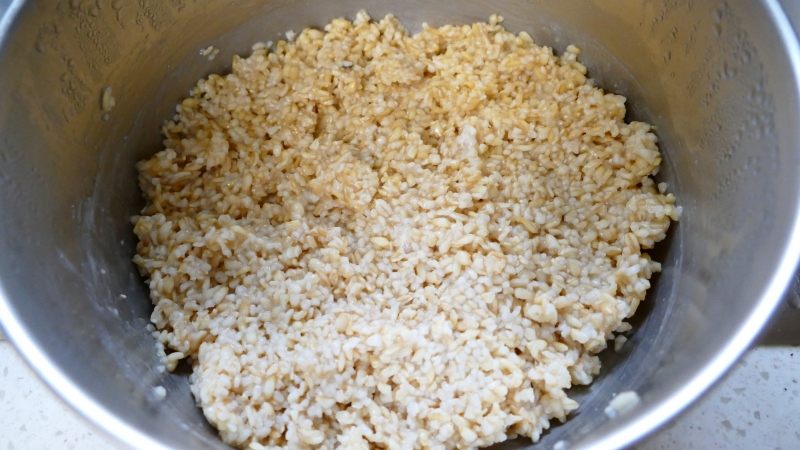
Around 3:00 - 4:00 pm mix the dough for the Wheat Rye Sourdough. In a mixing container add the starter, water, flours, salt and cooled grains.
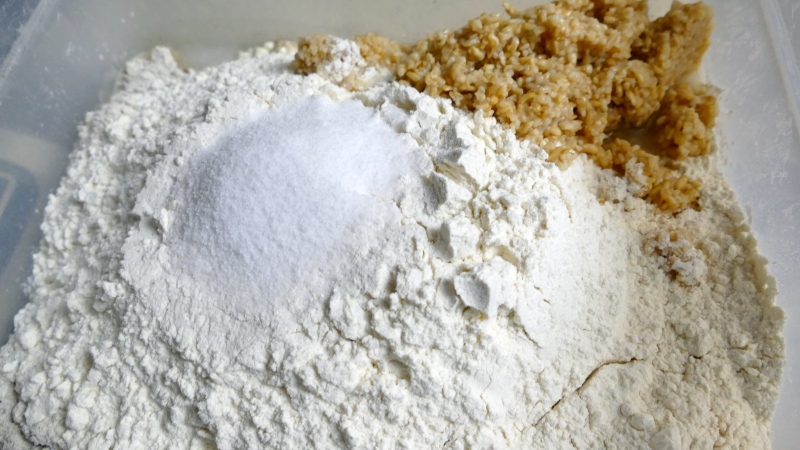
Mix all ingredients together into a sticky mass. Because of the high hydration (80%) and the addition of rye, this dough will be extra sticky. Use wet hands to fold and shape the dough or use some dusting flour on your surface when shaping. Dough temp is around 77F.
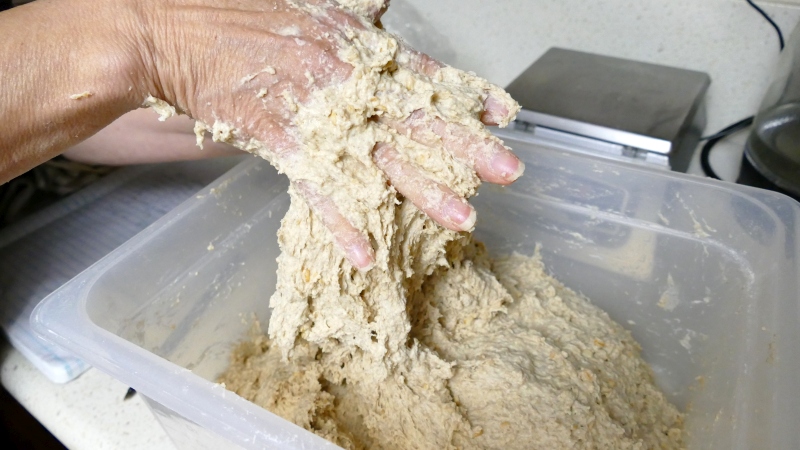
Cover the dough and allow it to ferment at around 77F. I used my oven with the light on and the door propped open. You can also use a dough proofer.
Fold the dough every 45 minutes or at least five times while the dough is bulk fermenting. Make sure your hands are wet or oiled because the dough will stick to them.
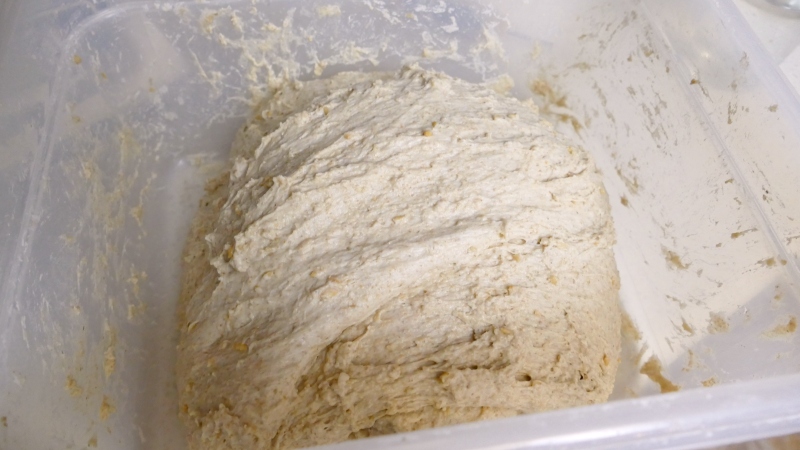
After four hours the dough should be stronger (dough with whole grains and rye is not really strong, just stronger than when you began) and show some bubbles.
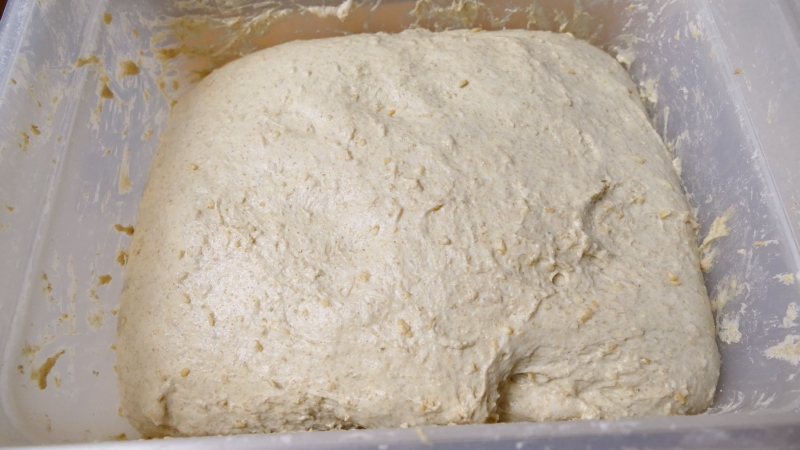
Shape your dough and place into floured bannetons. Cover with plastic bags and then cold ferment overnight, either in your refrigerator or if you have a cold porch that is around 40-45F you can use that. In the spring and fall, using a cold porch or a cold garage is a great way to cold ferment dough. Since the temp is above 40F the dough will rise slowly but surely and be ready sooner the next morning than a really cold refrigerator. However, a refrigerator works too, it can just take additional time in the morning to warm up and final proof.
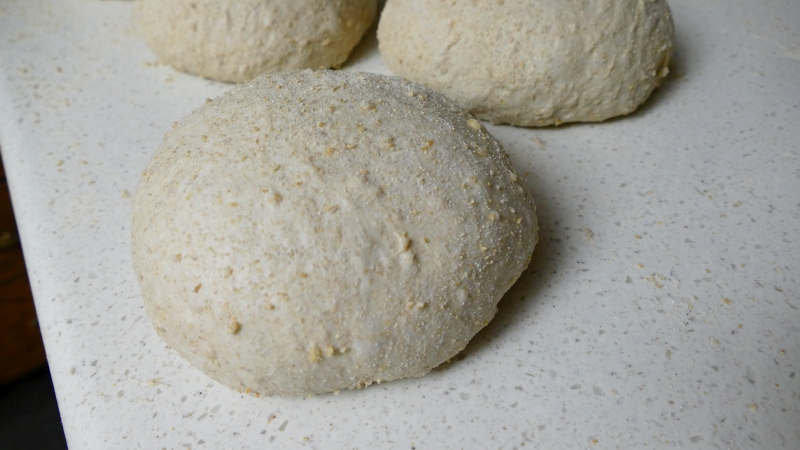
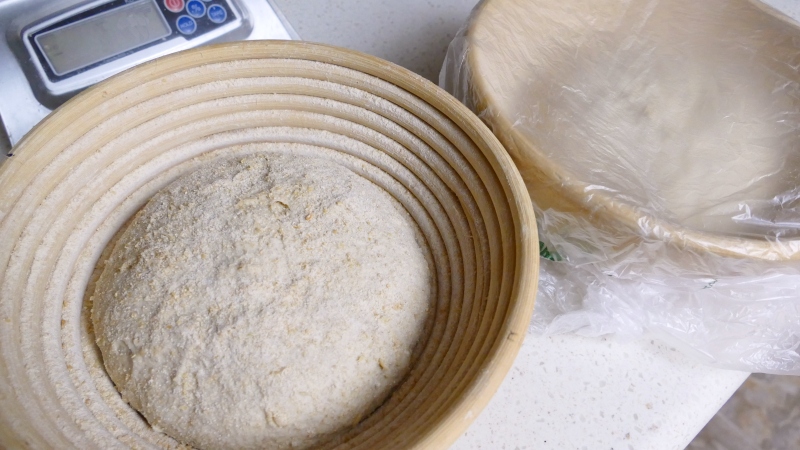
After 10-12 hours of cold proofing final proof if necessary, if the dough is ready to bake then pre-heat your oven/stone and bake your dough. Make sure to stagger your loaves out of the fridge or cold porch so they are not all ready to bake at the same time.
My dough had risen pretty nicely so I pre-heated my oven/stone to 480F and baked the loaves.
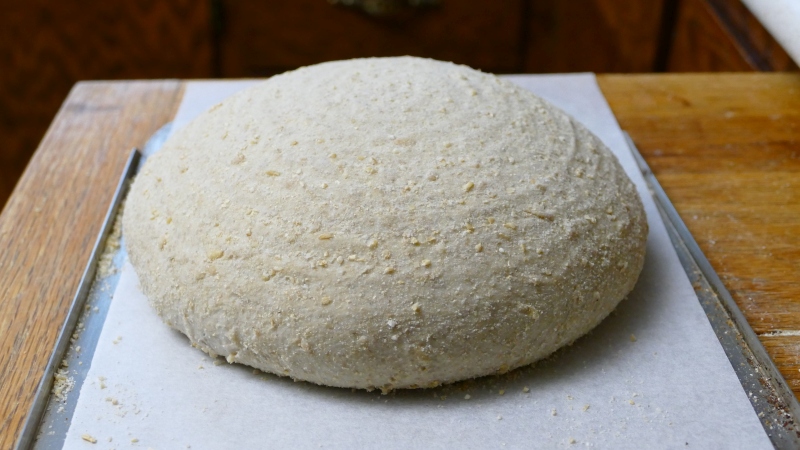
Use stencils if you wish (moisten the dough then lay down the stencil and sift white flour over it), then score and place in hot oven with steam (or use your Dutch oven). Bake with steam for 18 minutes and then remove the lid or remove steam source and bake an additional 18 minutes to brown up your loaf (I turn my loaf halfway through the second part of the bake).
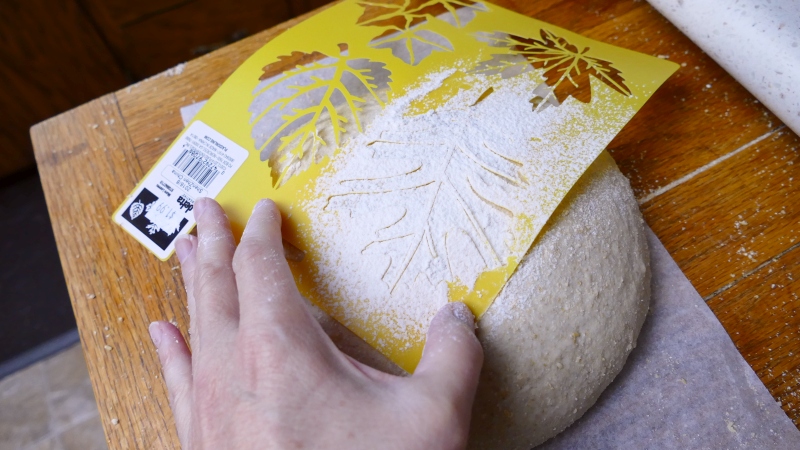
Remove your finished loaf to a cooling grate and bake the rest of the loaves the same way.
Loaves should register 210+F for internal temperature.
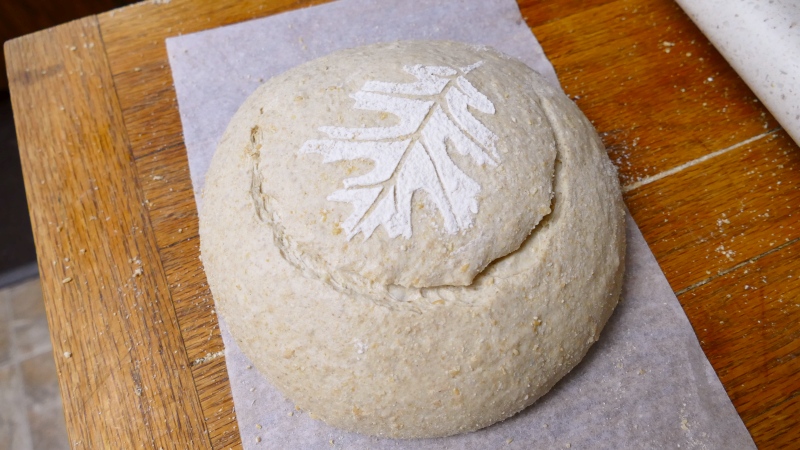
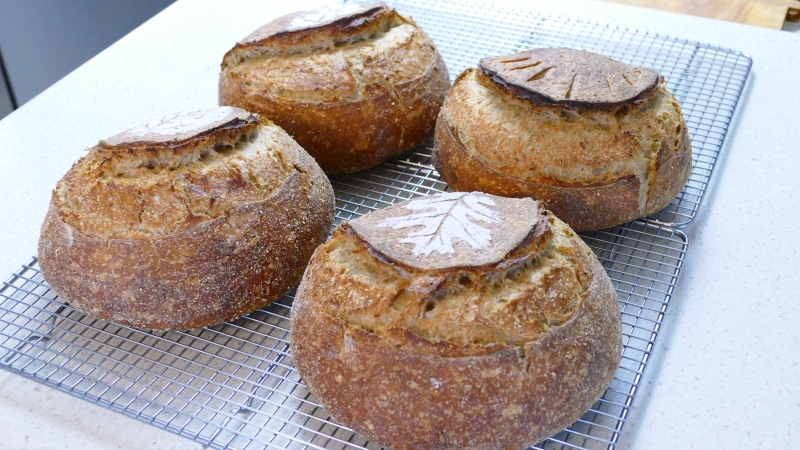
Ingredients
Directions
Prepare the cracked grains a few hours before mixing your dough so the grains can cool.

Using 100 grams of cracked grain, pour 200 grams of boiling water over the grains and cover the grains/water. Allow mixture to cool and absorb the water.

Around 3:00 - 4:00 pm mix the dough for the Wheat Rye Sourdough. In a mixing container add the starter, water, flours, salt and cooled grains.

Mix all ingredients together into a sticky mass. Because of the high hydration (80%) and the addition of rye, this dough will be extra sticky. Use wet hands to fold and shape the dough or use some dusting flour on your surface when shaping. Dough temp is around 77F.

Cover the dough and allow it to ferment at around 77F. I used my oven with the light on and the door propped open. You can also use a dough proofer.
Fold the dough every 45 minutes or at least five times while the dough is bulk fermenting. Make sure your hands are wet or oiled because the dough will stick to them.

After four hours the dough should be stronger (dough with whole grains and rye is not really strong, just stronger than when you began) and show some bubbles.

Shape your dough and place into floured bannetons. Cover with plastic bags and then cold ferment overnight, either in your refrigerator or if you have a cold porch that is around 40-45F you can use that. In the spring and fall, using a cold porch or a cold garage is a great way to cold ferment dough. Since the temp is above 40F the dough will rise slowly but surely and be ready sooner the next morning than a really cold refrigerator. However, a refrigerator works too, it can just take additional time in the morning to warm up and final proof.


After 10-12 hours of cold proofing final proof if necessary, if the dough is ready to bake then pre-heat your oven/stone and bake your dough. Make sure to stagger your loaves out of the fridge or cold porch so they are not all ready to bake at the same time.
My dough had risen pretty nicely so I pre-heated my oven/stone to 480F and baked the loaves.

Use stencils if you wish (moisten the dough then lay down the stencil and sift white flour over it), then score and place in hot oven with steam (or use your Dutch oven). Bake with steam for 18 minutes and then remove the lid or remove steam source and bake an additional 18 minutes to brown up your loaf (I turn my loaf halfway through the second part of the bake).

Remove your finished loaf to a cooling grate and bake the rest of the loaves the same way.
Loaves should register 210+F for internal temperature.



Responses